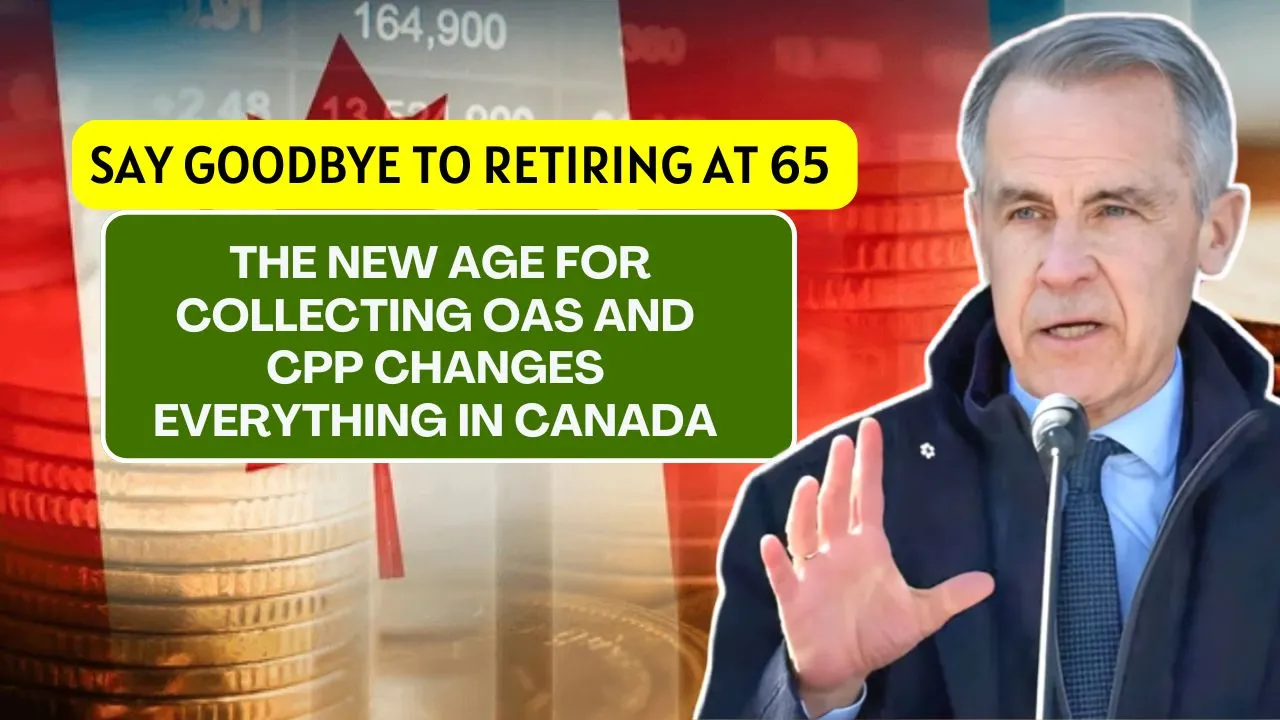Retiring at 65 Canada: For generations, retiring at 65 in Canada has been considered the standard transition into the golden years. It’s the age at which most people expected to stop working and start drawing from public pensions like Old Age Security (OAS) and the Canada Pension Plan (CPP). But in 2025, things look different. With longer life expectancy, economic changes, and pension policy evolution, Canadians are increasingly rethinking what retirement should look like.
As financial demands increase and life spans grow, Canadians are finding that sticking to age 65 might not stretch their savings far enough. Whether you’re approaching retirement or planning early, it’s vital to understand how the system is changing—and why flexibility is the new rule for retirement.
Retiring at 65 Canada
When it comes to Retiring at 65 Canada, traditional expectations are being replaced with more personalized approaches. While age 65 remains the eligibility benchmark for OAS, and 60 for CPP (with reductions), the benefits of delaying these programs are now clearer than ever. Waiting until age 70 can lead to significantly higher monthly payments. With rising healthcare costs and evolving financial realities, many Canadians are now choosing phased retirement or working into their late 60s. This article explores what these shifts mean for you—and how to navigate retirement planning effectively.
Overview Table
| Benefit | Start Age | Impact on Monthly Payment |
| CPP | 60 | 36% reduction |
| CPP | 65 | Standard amount |
| CPP | 70 | 42% increase |
| OAS | 65 | Standard amount |
| OAS | 70 | 36% increase |
| Retirement Trend | – | Shift towards later retirements |
Changing Retirement Norms in Canada
Gone are the days when retirement meant a sudden stop at age 65. Today, Canadians are working longer and retiring later. Why? Several factors are influencing this change. People are living longer, meaning retirement could last 20–30 years. Housing, food, and healthcare costs continue to rise, stretching savings thinner than ever. Plus, pension systems are adjusting their rules to encourage later withdrawals. Government incentives and increased awareness have led many to see retirement as a gradual transition, rather than a hard stop.
What’s Happening With CPP?
CPP is available from age 60, but claiming it early comes at a price. A person who starts receiving CPP at 60 will see their monthly payment reduced by up to 36%. On the other hand, delaying until age 70 means a 42% increase. This decision is crucial and should be based on health, job flexibility, and financial stability.
For example, someone expecting to live well into their 80s could receive tens of thousands more by waiting. And because CPP is indexed to inflation, delaying also locks in a higher base that continues to grow.
Old Age Security (OAS) Delays Pay Off Too
OAS follows a similar pattern. While the standard start is age 65, you can delay until 70 to boost your monthly payment by 36%. This option is especially useful for those who continue working into their late 60s or have other income sources. Delaying helps avoid higher taxes in peak income years and allows your future payments to be larger.
Choosing when to start OAS should align with your financial goals, projected health, and overall retirement plan. The flexibility to delay offers more control and can improve long-term financial security.
Clues That Retirement Age Could Be Raised in the Future
Although no formal legislation is in place, there’s speculation about raising the retirement age in Canada. Back in 2016, the government reversed a plan to push OAS eligibility from 65 to 67. But rising fiscal pressures and aging demographics could bring the issue back into focus.
Internationally, countries like the U.S. and U.K. have already increased retirement ages. Canada may eventually follow suit, making it more important than ever for Canadians to stay proactive in retirement planning and stay informed about potential policy changes.
Canadians Are Working Longer
Recent data from Statistics Canada shows that nearly 1 in 5 Canadians over age 65 is still working. Some do it out of necessity, but many choose to stay active, maintain routine, or enjoy additional income. Jobs in consulting, part-time roles, or starting small businesses have all become common among older workers.
Working past 65 also helps bridge the financial gap, delaying pension withdrawals and boosting overall lifetime income. For some, a phased retirement—working fewer hours while collecting partial income—provides the perfect balance between work and relaxation.
Planning Ahead: Flexibility Is Key
Retirement planning in Canada is no longer a one-size-fits-all process. Instead of picking a single date, Canadians are encouraged to:
- Evaluate savings: Use retirement calculators to assess how long your savings will last.
- Consider lifestyle goals: Travel, hobbies, or part-time work may require more flexible timelines.
- Understand benefit structures: Know how CPP and OAS change with age.
- Prepare for medical costs: Factor in long-term care and prescription coverage needs.
- Stay updated: Follow government policy changes that might impact benefit timing or amounts.
Adopting a flexible mindset is key to retiring on your own terms, even if that means pushing the timeline forward or back.
Fact Check
- CPP can start at 60 with reductions or be delayed to 70 with increased payments.
- OAS still begins at 65 but can be delayed for a 36% increase.
- There’s no current plan to raise retirement ages in law, but the idea is still under discussion.
- Most retirees benefit from understanding how payment timing affects lifetime income.
FAQs
1. Can I still retire at 65 in Canada?
Yes, you can still retire at 65 and collect CPP and OAS. However, consider delaying for higher monthly payments.
2. Will CPP and OAS eligibility ages increase soon?
There are no current changes, but rising life expectancy and fiscal concerns may bring this topic back to the political table.
3. Is it better to take CPP at 60 or 70?
If you expect to live into your late 80s or beyond and have other income sources, delaying to 70 often results in more lifetime income.
4. Can I work and collect CPP or OAS?
Yes. You can work while receiving both benefits. Just be aware of income tax implications.
5. Does delaying CPP or OAS impact taxes?
Yes. Delaying benefits can reduce tax burdens in your 60s and increase your payments when you might be in a lower tax bracket.
Final Thoughts
The retirement age in Canada is evolving—and so should your plan. Retiring at 65 Canada is still possible, but it’s no longer the default for a secure future. The longer you wait to collect CPP or OAS, the more you receive. This makes flexible planning and personal choice more important than ever.
As government programs adapt to economic and demographic realities, your retirement strategy should too. Whether you retire early, late, or somewhere in between, your best asset is informed decision-making.
Take control of your retirement today—consult a financial planner, explore your government benefit options, and subscribe to updates to stay ahead of potential changes. Your future self will thank you.
















